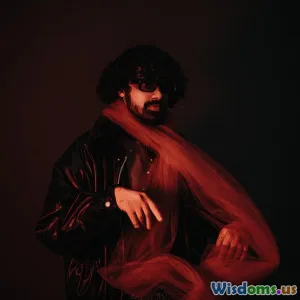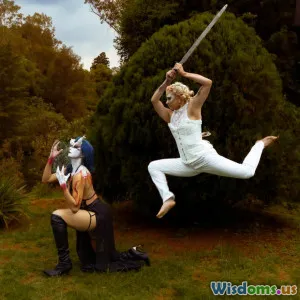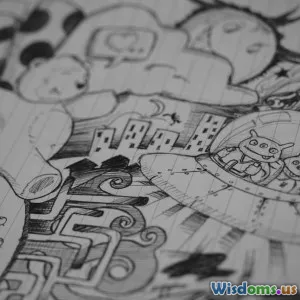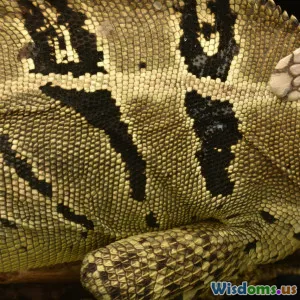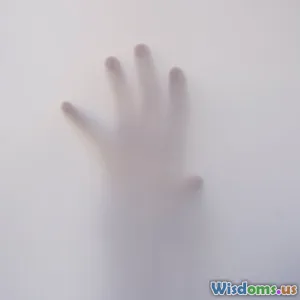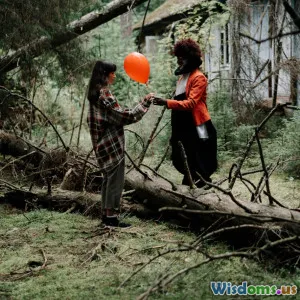
A Skeptic's Guide to Understanding the Loch Ness Monster
9 min read A detailed skeptical exploration of the Loch Ness Monster legend, blending science, history, and folklore. (0 Reviews)
A Skeptic's Guide to Understanding the Loch Ness Monster
Introduction
For over eight decades, the Loch Ness Monster—affectionately known as "Nessie"—has captivated the world's imagination. Tales of a prehistoric creature lurking beneath Scotland’s serene waters straddle the line between myth and reality. But amid the lore and thrilling sightings, a skeptic's perspective pushes us to ask: What do the facts say? Could the legend be a craftsman blend of folklore, misidentification, and wishful thinking? This guide probes beneath the surface, aiming to unpack the mystery surrounding Loch Ness and the creature that calls it home.
Unveiling the Origin of the Legend
The first modern wave of interest in Nessie sparked in 1933 when a local newspaper reported a sighting of a strange animal in Loch Ness. That year, the dramatic newly constructed roads surrounding the loch brought more visitors—and therefore, more sightings. But the cryptid’s roots stretch far deeper, into ancient Scottish folklore.
Early Accounts and Folklore
References to large creatures in Loch Ness appear in Scottish folklore centuries before 1933, with tales of kelpies—supernatural water horses—and dragon-like beasts inhabiting the loch. The legendary "Monster of Loch Ness" was thus a regional myth, one intertwined with cautionary tales common in Scottish oral traditions.
Notably, the 565 A.D. story of Saint Columba reporting a water beast in the River Ness area is often cited as an early monster encounter. While engaging, these stories are steeped in religious and allegorical significance rather than empirical observation.
Examining the Evidence Through a Skeptic’s Lens
Convincing evidence would be paramount for any cryptid claim. The Loch Ness Monster campaign offers intriguing yet murky evidence—photos, sonar readings, and eyewitness reports. Each deserves measured scrutiny.
Photographic Evidence
Perhaps the most iconic image is the 1934 "Surgeon’s Photograph," depicting a long-necked creature gliding across the water. However, decades later, it was revealed as a hoax involving a toy submarine and crafted head.
Beyond this, many photographs of Nessie are either blurry, ambiguous, or explainable as floating logs, waves, or common animals like otters. For example, careful analysis shows that waves can create visual illusions attracting monster-like interpretations.
Sonar and Technological Searches
From the 1950s onward, the advent of sonar technology offered a new tool to explore Loch Ness’ depths scientifically. Several expeditions detected unexplained sonar contacts, sparking excitement. Yet, systematic surveys found no conclusive evidence of a large, unknown creature.
Notably, a comprehensive 2019 environmental DNA (eDNA) study by ecologist Neil Gemmell at the University of Otago (New Zealand) took water samples from the loch to analyze genetic traces of organisms present. The results showed abundant freshwater fish, mammals, and plants—but no DNA evidence of large animals like plesiosaurs or giant eels beyond expected species, further diminishing claims of Nessie’s existence.
Eyewitness Reports and Psychological Factors
Eyewitness accounts have shaped Nessie lore significantly, but human perception is notoriously fallible, especially under low visibility or emotional stress. The human brain often seeks patterns—a phenomenon called "pareidolia"—which may result in misinterpretation of natural objects as monstrous shapes.
A British Psychological Society study revealed how expectation influences sighting reports, with individuals primed to expect a monster more likely to interpret ambiguous stimuli accordingly.
Ecology and Biology: Could Nessie Exist?
Loch Ness is enormous—about 37 kilometers long, 1.5 kilometers wide, and over 200 meters deep in places—providing ample scope for mysteries. However, understanding the ecosystem and creature survival lends weight to skeptical views.
Issues of Habitat Sustainability
For a large breeding population to sustain itself, sufficient food and habitat are critical. Loch Ness supports a range of fish species and some marine mammals like seals (in adjacent lochs), but the ecosystem appears unsuitable to sustain a large, unknown aquatic predator.
Scientists estimate that hundreds of large animals would be needed for breeding and genetic diversity if Nessie were a large vertebrate. Such a population would likely leave undeniable traces—carcasses, abundant sightings, or distinct ecological disruptions—which have not been documented reliably.
Alternative Explanations: Misidentifications and Natural Phenomena
Skeptics suggest many sightings arise from known animals like sturgeon, a large fish naturally present in lochs, or groups of otters swimming in a line. Waves and logs supporting floating debris often create odd shapes. Optical illusions from light refraction in the loch can further exaggerate uncertainty.
Furthermore, seismic activity or gas bubbles from the loch’s sediment layers could produce disturbances mistaken for movement.
Cultural and Economic Dimensions
The legend of the Loch Ness Monster serves a cultural and economic function, shaping identity, tourism, and local economy.
Tourist visits to Loch Ness surged dramatically during the 20th century, fueled by mass media sensationalism. This economic incentive has perpetuated the myth, as souvenir sales, themed cruises, and local businesses benefit substantially.
This interplay of folklore and commercial interests raises questions on the impartiality of some Nessie promotion—though it does not necessarily affect the scientific rigor applied in serious investigations.
Conclusion: Embracing Mysteries with Skepticism and Wonder
The Loch Ness Monster narrative marries ancient myth, modern sensationalism, and the human penchant for wonder. Skeptical inquiry reveals that while Nessie delights, the evidence supporting a large, unknown creature in Loch Ness is insufficient and often flawed.
Yet skepticism need not diminish the joy of mystery. As Carl Sagan eloquently said, “Extraordinary claims require extraordinary evidence.” The Nessie story invites us to appreciate both folklore’s power and the discipline of science—reminding us that curiosity and critical thinking are not mutually exclusive.
In seeking the truth behind the Loch Ness Monster, we participate in a timeless human quest: to understand the unknown, to separate fact from fiction, and to find magic hidden in nature and stories. Whatever one’s belief, Loch Ness remains a beacon of human fascination, perched between skepticism and the sublime.
References
- Gemmell, N. et al. (2019). "Environmental DNA reveals lakes don’t contain prehistoric mysteries." Scientific Reports.
- British Psychological Society (2017). Study on eyewitness perception and expectation.
- Loxton, D. (2013). Abominable Science!: Origins of the Yeti, Nessie, and other Famous Cryptids. Columbia University Press.
- Official Loch Ness Monster Story and Data Archives.
Embark on your own exploration: next time you glimpse a shadow on the water, allow both imagination and reason to guide you.
Rate the Post
User Reviews
Popular Posts










